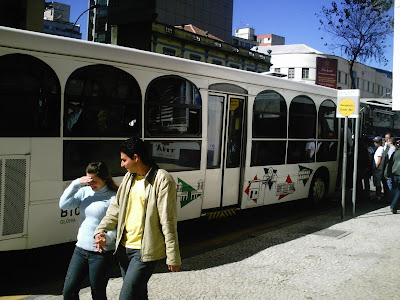What lies West of Curitiba?
Saying that somethings is West of Curitiba serous business. To the West lies for example the Campos Gerais – a good sounding term that means general fields and the origin of which I have no idea right now. I am not to offer a geographical description of the “campos” but I can offer links to material signed by people much better than myself the field of “fields”. The city of Ponta Grossa – called Queen of the Fields is home to one of the great sights: Vila Velha. Also around the Campos Gerais area are atractions like the Guartelá Canyon – said to be the longest in the world ( I don’t care how long things are) and cities like Castro, Tibagi all influenced by the Guartelá canyon, open spaces, araucaria forests, waterfalls and the Iapó River. Historically the Campos Gerais cities and farms have played an important role in Brazilian colonization since they were the route used by tropeiros (mule herders) as they brought beef, jerk, cattle and cargo animals from Rio Grande do Sul to the marke





